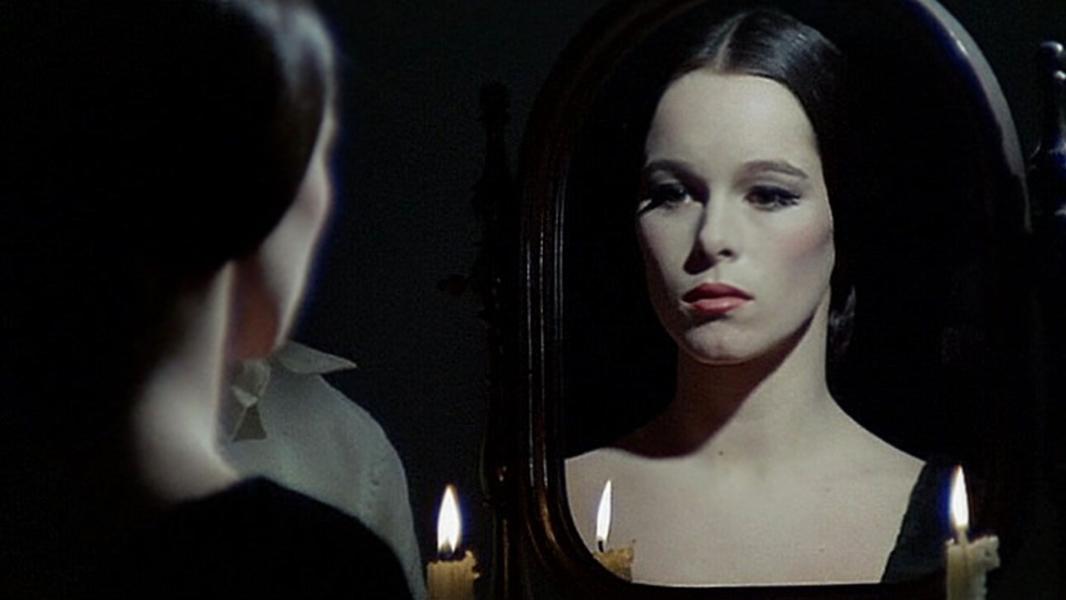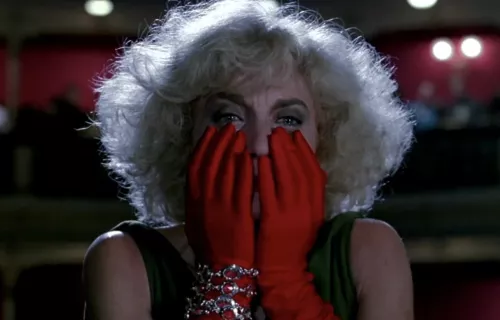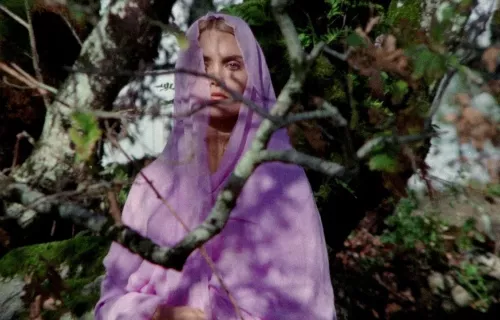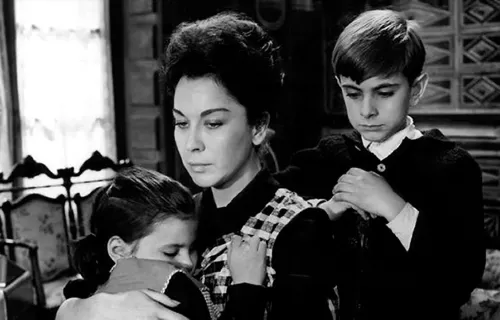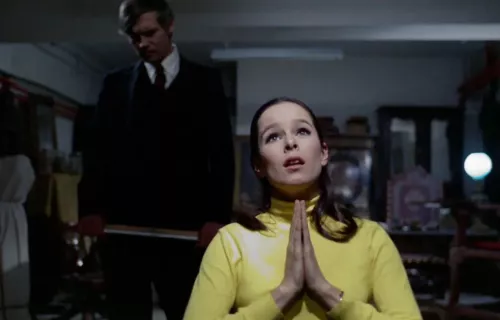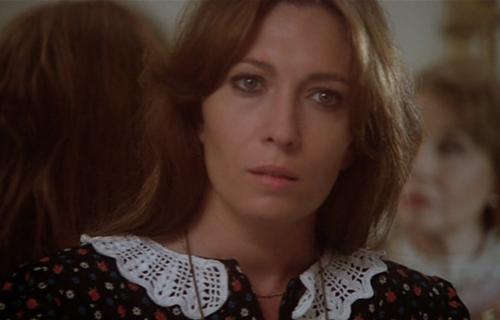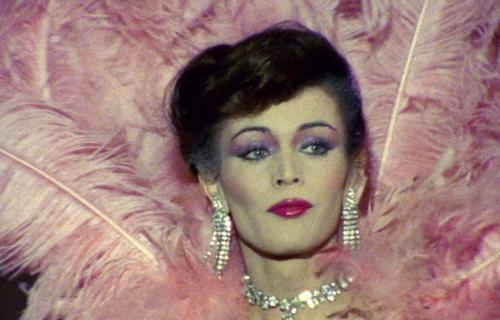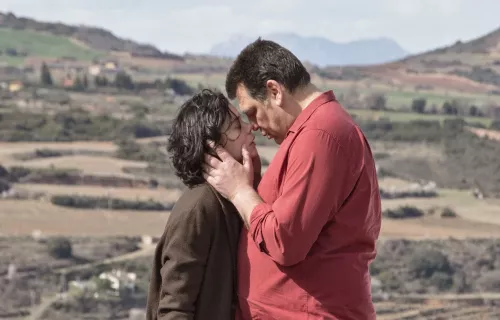Film
EUROPALIA
RESOLUTION. On Lifetime Decisions in Spanish Cinema
Film Program
Naar aanleiding van de video-installatie Resolution. Over levensbepalende keuzes in de Spaanse cinema, te zien van 12 juli tot 23 november in ModeMuseum Antwerpen, presenteren De Cinema en Europalia een gelijknamige filmreeks met zeven markante films – vaak echte cultklassiekers – uit Spanje, het gastland van Europalia 2025.
Kleur vormt de rode draad in dit programma. Resolution zoomt in op de gebaren van actrices en de keuzes van vrouwen doorheen honderd jaar Spaanse cinema. Tegelijk onderzoekt het hoe filmafdelingen als kostuumontwerp en make-up meebouwen aan die verhalen. Daaruit blijkt dat kleuren niet alleen beelden bepalen, maar ook emoties en symboliek oproepen – en zo een eigen verhaal vertellen.
Elke film draait rond één kleur. Elke kleur vertelt iets over vrouw-zijn en over de tijd waarin de film ontstond. Alle films in deze reeks maken deel uit van de honderd titels die samen Resolution vormen.
ENG
Alongside the video installation Resolution. On Lifetime Decisions in Spanish Cinema, which will be on view at MoMu – Fashion Museum Antwerp from July 12 to November 23, De Cinema presents a film cycle of the same name, featuring seven key titles – many of them true cult classics – from Spain, the guest country of Europalia 2025.
This program is organized around color as a narrative thread. Resolution. On Lifetime Decisions in Spanish Cinema is a video work that delves into the gestures of actresses and the decisions of women throughout one hundred years of Spanish cinema, exploring how various film departments—from costume design to makeup—have helped shape this representation. From this investigation, we discover that colors not only shape the image but also build their own emotional and symbolic narrative, crafting a story of their own.
Thus, blue—the blue of denim jeans—becomes a symbol of freedom in films directed by women in the seventies: women who divorce, work, claim their own space, and break with all that is established. Purple, historically linked to feminism—already chosen by suffragists as the movement’s color—is also the tone of Spanish “fantaterror,” a genre populated by ghosts, vampires, witches, and she-demons embodying a freer, untamable, even dangerous woman. Red, the eternal color of blood, vengeance, and the highest passions, runs viscerally through these films. Green, evoking the idea that “the grass is greener,” represents the desire for a better life, the impulse to cross borders, to imagine an “outside” and an “otherness” charged—not always positively—with expectations. Yellow can act as an emotional trigger of childhood, trauma, or memory. Black and white, meanwhile, refer to invisibility and neutrality, sometimes chosen as refuge or survival strategy during the years of the Spanish dictatorship. At the opposite extreme, the rainbow rises as an emblem of the fullest and most diverse freedom of sexual identity.
Each film, a color. Each color, a way of being a woman and a time. All the films mentioned are part of the hundred that make up the video installation Resolution.
ESP
En paralelo a la videoinstalación Resolución. On Lifetime Decisions in Spanish Cinema, que podrá visitarse en el MoMu – Fashion Museum Antwerp entre el 12 de julio y el 23 de noviembre, De Cinema presenta un ciclo de cine homónimo compuesto por siete títulos clave —muchos de ellos auténticas películas de culto— procedentes de España, país invitado este año por Europalia 2025.
Este programa se articula en torno al color como eje narrativo. Resolución. On Lifetime Decisions in Spanish Cinema es una pieza que indaga en los gestos de las actrices y en las decisiones de las mujeres a lo largo de cien años de cine español, explorando cómo los diferentes departamentos cinematográficos —desde el vestuario hasta el maquillaje— han contribuido a moldear dicha representación. A partir de esta investigación, descubrimos que los colores no solo “visten” la imagen, sino que construyen su propio relato emocional y simbólico, tejiendo así una narrativa propia.
Así, el azul —el azul del denim, de los vaqueros— se transforma en símbolo de libertad en las películas dirigidas por mujeres en los años setenta: mujeres que se divorcian, que trabajan, que conquistan su espacio y rompen con todo lo establecido. El morado, históricamente ligado al feminismo —ya elegido por las sufragistas como color del movimiento—, es también el tono del fantaterror español, un género poblado por fantasmas, vampiras, brujas y demonias que encarnan a una mujer más libre, indomable, incluso peligrosa. El rojo sempiterno color de la sangre, de la venganza y de las más altas pasiones atraviesa las películas de manera visceral. El verde, evocando la idea de que “the grass is greener”, representa el deseo de una vida mejor, el impulso de cruzar fronteras, de imaginar un “afuera” y una “otredad” cargados -no siempre para bien- de expectativas. El amarillo puede actuar como detonante emocional de la infancia, del trauma o del recuerdo. El blanco y negro, por su parte, remite a la invisibilidad y a la neutralidad, a veces elegida como refugio o estrategia de supervivencia durante los años de la dictadura española. En el extremo opuesto, el arcoíris se alza como emblema de la libertad más plena y diversa de la identidad sexual.
Cada película, un color. Cada color, una forma de ser mujer y una época. *Todas las películas mencionadas forman parte de las cien que conforman la videoinstalación Resolución.

